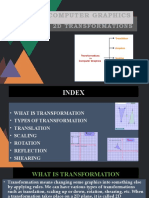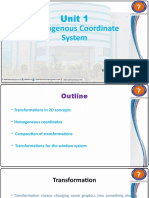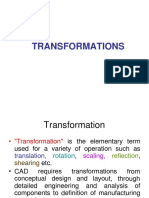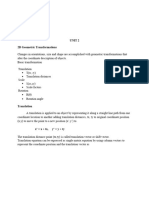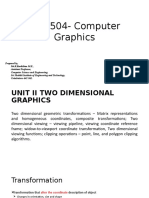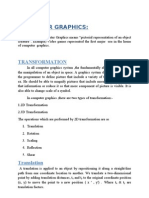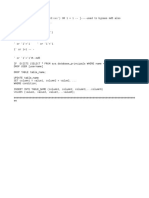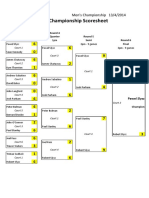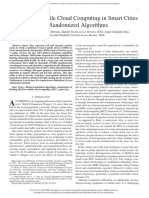0% found this document useful (0 votes)
29 views3 pagesImportant Concepts Under Computer Graphics
This document discusses key concepts in computer graphics including object geometry, coordinate systems, and transformations. Transformations change an object's size, position, or orientation and can include rotation, reflection, scaling, translation, and shearing. Translations shift an object parallel to itself by adjusting x and y coordinates. Rotation repositions an object along a circular path by a specified angle, with positive angles indicating counter-clockwise rotation.
Uploaded by
Ravi TejCopyright
© © All Rights Reserved
We take content rights seriously. If you suspect this is your content, claim it here.
Available Formats
Download as PPTX, PDF, TXT or read online on Scribd
0% found this document useful (0 votes)
29 views3 pagesImportant Concepts Under Computer Graphics
This document discusses key concepts in computer graphics including object geometry, coordinate systems, and transformations. Transformations change an object's size, position, or orientation and can include rotation, reflection, scaling, translation, and shearing. Translations shift an object parallel to itself by adjusting x and y coordinates. Rotation repositions an object along a circular path by a specified angle, with positive angles indicating counter-clockwise rotation.
Uploaded by
Ravi TejCopyright
© © All Rights Reserved
We take content rights seriously. If you suspect this is your content, claim it here.
Available Formats
Download as PPTX, PDF, TXT or read online on Scribd
/ 3




















